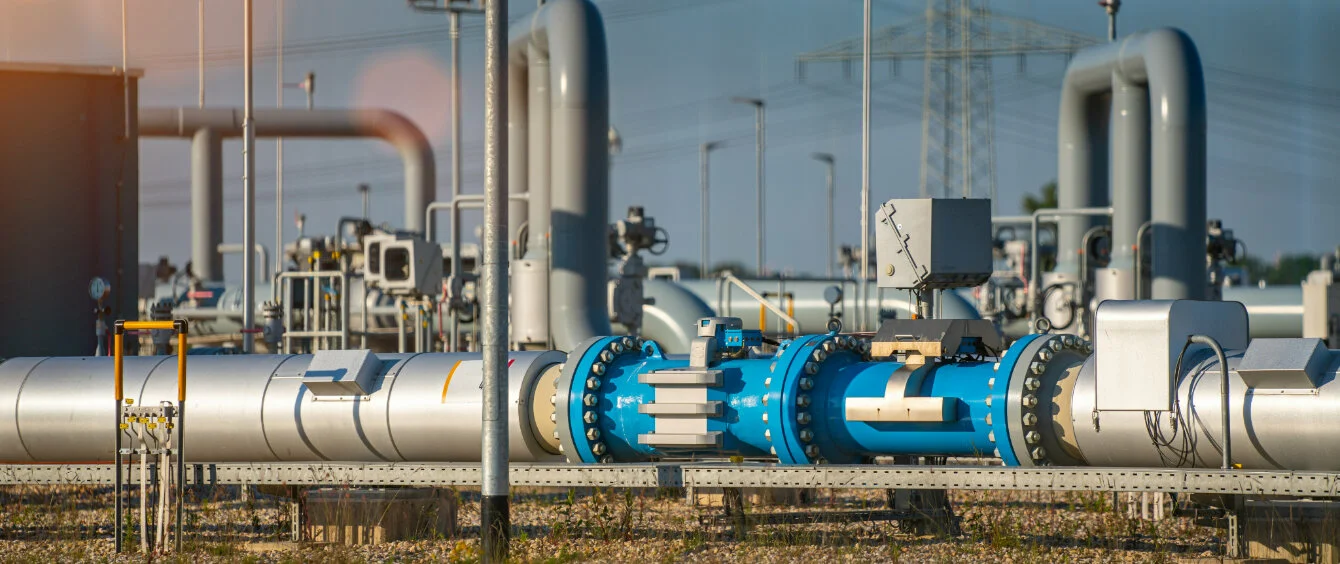Russia’s war of aggression on Ukraine is having a massive impact on energy supply in Europe. Gas has been especially hard hit, as nearly half of EU natural gas imports come from Russia. A string of countries is looking for alternatives in order to reduce this dependency. Germany, for one, plans to source liquefied natural gas (LNG) from overseas nations. To this end, special ships capable of feeding LNG into the grid are set to moor off the coast as soon as the 2022/2023 winter (as reported by the en:former).
This would cause a shift in the gas network. Gas volumes flowing through pipelines from utilities in the east to consumers in the west would drop, with feed-ins increasing substantially in the north. Experts speak of a flow turnaround. Such changes pose a challenge for long-distance network operators because, despite the new situation, they must continue to ensure that the required volumes reach consumers.
Heiner Volker Temming, Team Leader Grid Planning at Open Grid Europe GmbH (OGE), Germany’s largest long-distance network operator, spoke with the en:former about how operators are handling the situation:
Mr. Temming, how has the feed-in environment changed in the last few months?
Gas deliveries from Russia have dropped since the beginning of the war. In turn, volumes from Norway, Belgium and other countries have risen considerably. Belgium has a major LNG terminal in Zeebrugge and a link to the United Kingdom via an interconnector. Gas transmission to France has decreased already. In exchange, it appears that greater volumes will have to be delivered to Eastern European countries which have strongly depended on Russian gas so far.
Significant quantities are soon to come from LNG terminals on the German coast. What will this mean for the gas grid?
We’re witnessing a very rapid change in a host of fundamental conditions. Basically, our grid is doing a 90-degree turn, with feed-ins now mainly coming from the north and west instead of from the east and north. This is something we as network operators must react to. It involves figuring out where more and less capacity is needed in the future.
Is the current gas grid designed to cope with these changes at all?
Basically, the German gas grid is quite expansive and our pipelines can be used bidirectionally, meaning that gas can flow to and fro. Therefore, what remains to be organised is logistics, which involves the integration of the new sources. We need to develop scenarios for gas to reach buyers. We’re working in close cooperation with the other long-distance network operators and relevant authorities to this end.
This is a routine procedure in network planning. What’s different this time around?
Well, it demands a much greater effort than usual. We must consider many more and extremely diverse cases. Plus, developments are dynamic, making it more difficult to establish plannable parameters for modelling purposes. This is because we must of course ensure security of supply, but we don’t want to build new capacity which we may end up not needing at all.
What are the options besides expanding the grid?
There are mechanisms we already make use of that are effective in the transition. For example, we have strengthened our ties to other long-distance network operators both in Germany and abroad. This allows us to identify and utilise available capacity in the network. In addition, we’re working with other companies and the relevant authorities to optimise potential for using gas storage facilities as a buffer. This will enable transmission bottlenecks to be avoided during the transition. This is quite demanding from a logistical perspective, but it’s doable.
But when integrating LNG terminals, there’s no way around expansion, is there?
It depends whether the terminal plays a major role. For instance, OGE has been commissioned to connect special ships so LNG can be landed in Wilhelmshaven. We’re constructing the Wilhelmshaven connector (WAL) because the port doesn’t have a pipeline so far. It will transmit the gas over about 30 kilometres to Etzel where it will flow into the Netra long-distance pipeline.
The WAL pipeline is scheduled to be completed by the end of 2022, which could set a record. Granted, it’s all about maintaining security of supply right now, but won’t the gas pipeline be at risk of not being needed a few years from now, once the energy transition has progressed?
Not at all! There may be a lot of pressure right now, and projects may be implemented much faster than would be the case under normal circumstances. But we mustn’t go for a quick and dirty solution. Whatever we build now must and will be future-proof. And in this case this means being hydrogen-ready. We want to contribute to shaping the post-gas era. One example of this is the H2ercules project, which OGE is planning with RWE and would like to roll out starting in 2026.
This will entail building electrolysis capacity in northern Germany and connecting it to major industrial consumers in the south and west via pipelines. Could the current shift to the gas grid help create a hydrogen-enabled north-south grid?
Short term, current developments appear to be standing in the way of planning a hydrogen grid as they tie down a huge amount of resources. But this isn’t true. In the medium and long run, I believe there’s a good chance that the lines that are being built right now can be used to transport hydrogen, which is produced, for example, with electricity generated by offshore wind farms.
